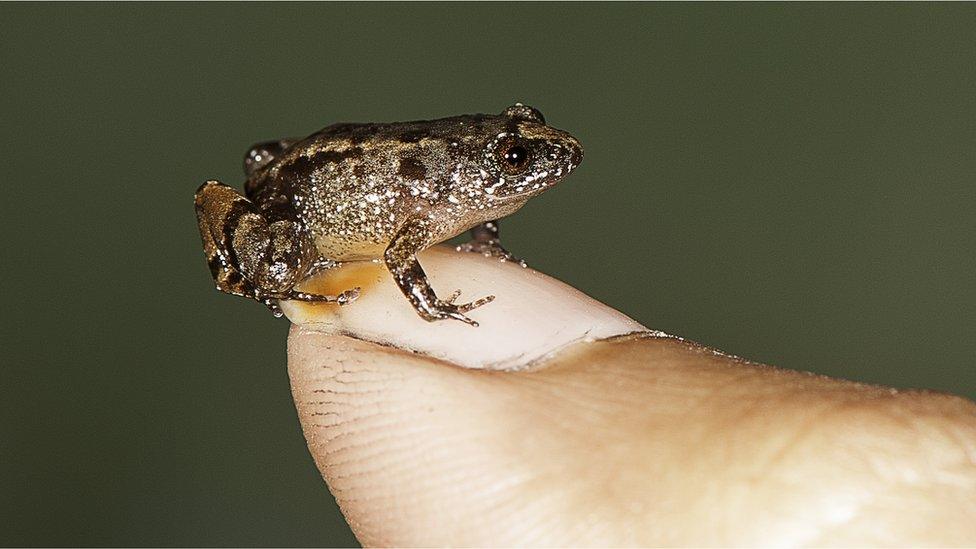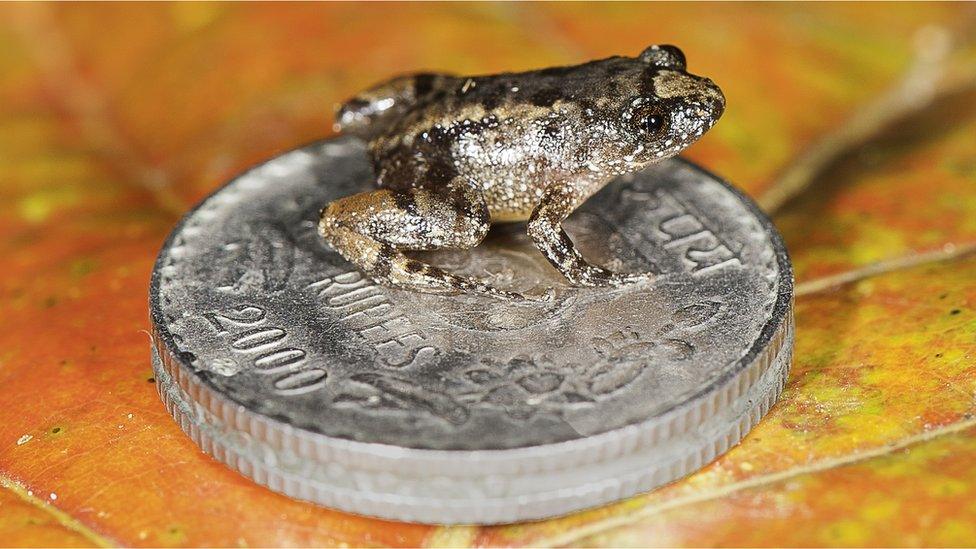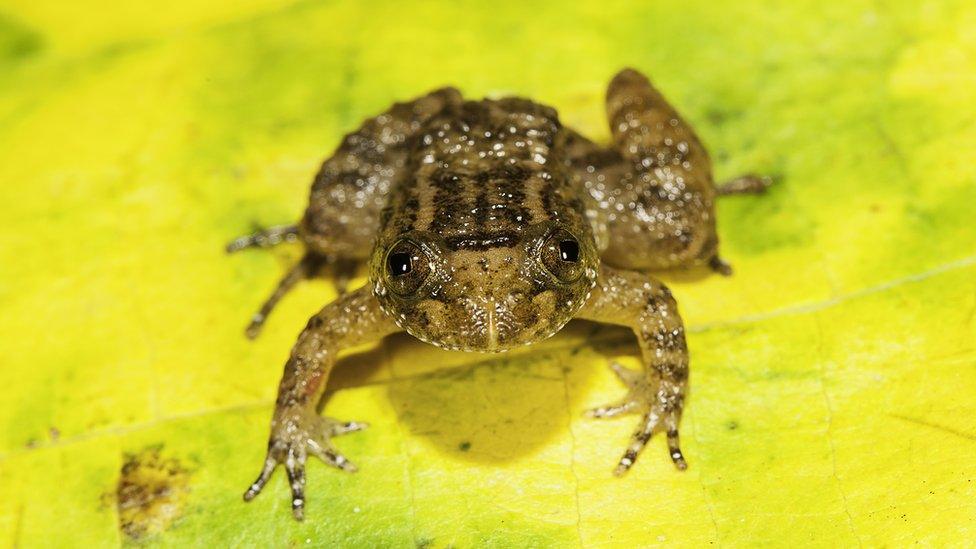Meet the frog that can sit on a thumbnail
- Published

The frogs sound more like insects than amphibians
Four new frogs so tiny that they can sit on a thumbnail have been discovered in the forests of India.
Among the smallest frogs in the world, they live on the forest floor and make insect-like calls at night.
Three larger species were also found, bringing to seven the number of night frogs discovered in the Western Ghats.
The mountain range, which runs parallel to the western coast of India, is home to hundreds of threatened plants and animals.
Scientists discovered the new species after several years of exploration in the forests of Kerala and Tamil Nadu.
Secretive habits
"These tiny frogs can sit comfortably on a coin or a thumbnail," said Sonali Garg of the University of Delhi, who was among the team that found the new creatures.
"We were surprised to find that the miniature forms are in fact locally abundant and fairly common.
"They were probably overlooked by researchers because of their extremely small size, secretive habitats and insect-like calls."

Night frog sitting on the Indian five-rupee coin
The night frog group, Nyctibatrachus, previously had 28 recognised species, of which three were miniature in size (less than 18mm).
The new species were identified through studying their DNA, physical features and call patterns.
The group is native to the Western Ghats of India, representing an ancient family that arose 70-80 million years ago.
Most of the new frogs live outside protected habitats or close to areas of human habitation.
Prof SD Biju of the University of Delhi, who led the research, has discovered over 80 new species of amphibians from India.
"Over 32%, that is one-third of the Western Ghats frogs, are already threatened with extinction," he said.
"Out of the seven new species, five are facing considerable anthropogenic threats and require immediate conservation prioritisation."

Athirappilly night frog
Dr Laurence Jarvis, head of conservation at the UK charity, Froglife, said the finding was globally significant.
"This highly biodiverse region contains many unique amphibian species and the area is under increasing threats from human disturbance," he said.
"The discovery of these new species will increase our understanding of the conservation priorities for amphibians in the region."
The research is published in PeerJ, external.
Follow Helen on Twitter, external.